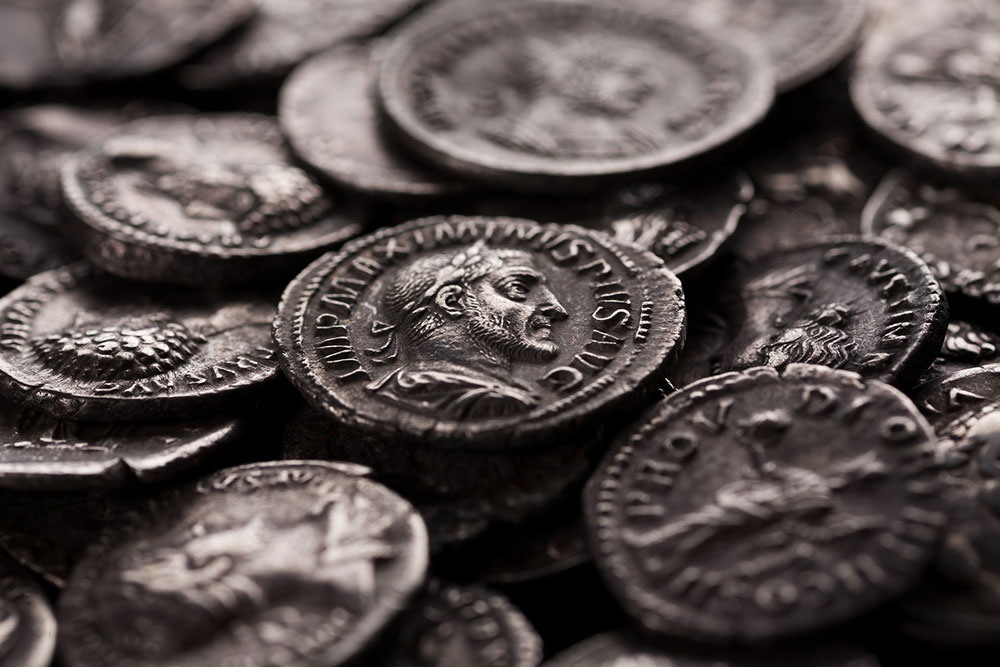11 rare coins that are worth a fortune

Embarking on the captivating journey of coin collecting opens a portal to history, artistry, and, occasionally, untold treasures. As enthusiasts delve into the depths of this exquisite hobby, understanding the importance of coin collection becomes paramount. Beyond their intrinsic value, coins serve as tangible artifacts, encapsulating the cultural, economic, and artistic nuances of their respective epochs. Uncovering rare coins is a journey that demands a keen eye, historical knowledge, and a passion for discovery.
The 1343 Edward III Florin
Regarded as one of the world’s oldest and most expensive coins, the 1343 Edward III Florin is one of only three pure gold coins in existence today. Depicting King Edward III seated on his throne flanked by leopard heads, the coin’s flip side features the Royal Cross ensconced in a quatrefoil. With two specimens preserved in London’s British Museum, its market value is $6.8 million. This ancient coin offers a glimpse into medieval coinage and royal grandeur.
The 1794 Flowing Hair Silver Dollar
With a market value of over $10 million, the 1794 Flowing Hair Silver Dollar is a numismatic rarity, primarily due to its limited mintage of less than 1,800 coins. Minted between 1794 and 1795, this coin features Lady Liberty on the obverse and an American eagle on the reverse. Proposed by President George Washington and Alexander Hamilton, it was the first government-minted coin in the country. Its scarcity and historical significance contribute to its immense value.
The 1787 Brasher Doubloon
Minted by goldsmith Ephraim Brasher in the late 18th century, the 1787 Brasher Doubloon is often referred to as the “Holy Grail” of coins. Priced between $5 million and $9 million, only seven specimens were minted. Featuring the state seal and the rising sun on one side and the American eagle and a shield on the other, it is the first gold coin minted in the country. With its limited quantity and historical importance, it stands as a revered numismatic treasure.
The 1913 Liberty Head Nickel
Valued at over $4 million, the 1913 Liberty Head Nickel is a coin surrounded by mystery. Not authorized by the U.S. Mint, only five specimens are known to exist, each with its unique story. The Walton specimen, lost for decades and later rediscovered, adds to the intrigue. With its limited number and mysterious origins, the 1913 Liberty Head Nickel continues to captivate collectors and enthusiasts alike.
The 1907 Saint-Gaudens Double Eagle
With a value exceeding $2 million, the 1907 Saint-Gaudens Double Eagle is a symbol of artistic renaissance. Crafted by Augustus Saint-Gaudens, this coin features a stunning rendition of Lady Liberty. Initially struck in high relief, later modifications were made for practical reasons. Its intricate design and association with the cultural revival of the early 20th century contribute to its significance in numismatic history.
The 1933 Saint-Gaudens Double Eagle
The 1933 Saint-Gaudens Double Eagle stands as one of the most coveted and valuable coins in the world, with a market value exceeding $7.5 million. Crafted by renowned sculptor Augustus Saint-Gaudens, this coin was never officially released for circulation due to the Gold Reserve Act of 1933. Despite its intended destruction, a few specimens found their way into the hands of collectors, triggering legal controversies. In 2002, a court ruling declared most of these coins to be government property, adding a layer of intrigue to their storied history.
The 2000 Sacagawea “Cheerios” Dollar
The 2000 Sacagawea “Cheerios” Dollar, priced at around $25,000 per coin, has a unique and quirky origin. Originally minted to promote the 2000 Lincoln Cent, these coins were accidentally engraved with eagle tail feathers on the flip side. Placed inside over 10 million boxes of Cheerios, only about 70 Sacagawea Cheerios coins are known to exist today. Its unconventional production and accidental release make it a fascinating addition to modern numismatics.
The Turban Head Eagle (1804 Eagle Gold)
Also known as the 1804 Eagle Gold, Capped Bust, or the Capped Bust Eagle, the Turban Head Eagle is valued at $5.1 million. Minted from 1795 to 1804, it was designed by Scottish-American engraver Robert Scot and was the largest denomination authorized by the Mint Act of 1792. Despite its name, Liberty wears a cap, not a turban, making its design unique. Discontinued in 1804, it re-emerged in 1834 for diplomatic presentations, earning its place among the rare and valuable coins.
The 1885 “Trade” Silver Dollar
The 1885 “Trade” Silver Dollar, valued at over $3.5 million, is among the rarest coins in the country’s numismatic history. Designed by engraver Charles Barber, its existence was discovered 25 years after its minting, leading to initial doubts about its year of production. With only five coins known to exist today, its value has risen considerably. The 1885 “Trade” Silver Dollar is a testament to the challenges and mysteries surrounding certain historical coins.
The 1804 Silver Dollar
The 1804 Silver Dollar, though named after the year 1804, was minted around 1834–35. It holds a market value of over $5 million, and only 15 specimens are known to exist. These coins were crafted as diplomatic gifts for Asian rulers by the U.S. Department of State. Categorized into three classes based on their inception period, these coins, with their historical significance and scarcity, hold a special place in the world of numismatics.
The 1873-CC Seated Liberty Dime
The 1873-CC Seated Liberty Dime is considered the unique coin from the Carson City Mint, which minted coins using gold from nearby mines. Valued at approximately $2.7 million, this dime holds historical significance tied to the gold rush era. Its limited production and association with a specific mint contribute to its rarity and desirability among collectors.
















